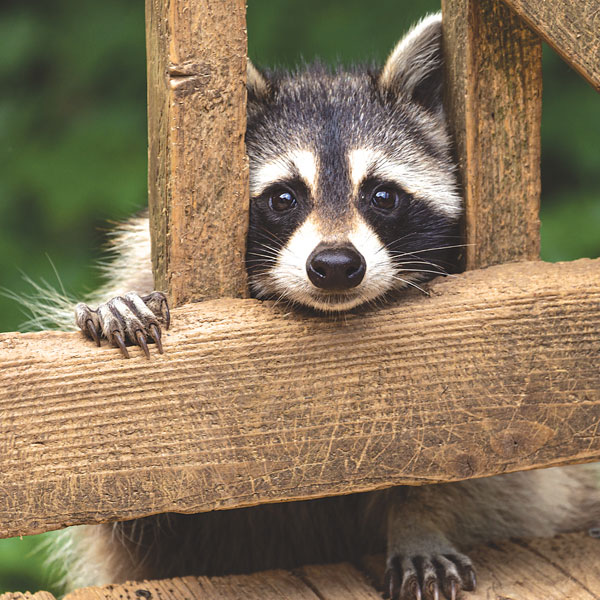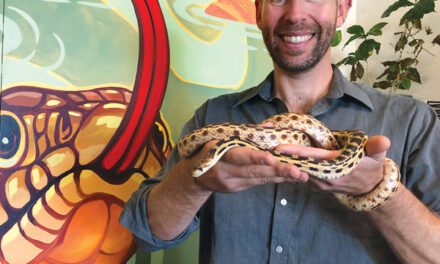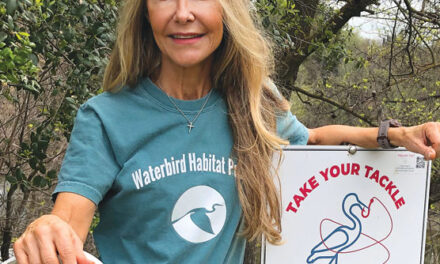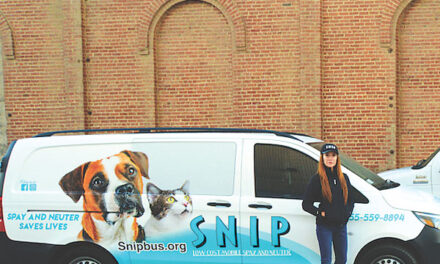Rambunctious Rascals
Living with urban raccoons can be possible
By LeAne H. Rutherford
February 2022
Highly adaptable and irresistibly adorable, raccoons abound in Sacramento. Mischievous, clever and cute, yes. But raccoons can quickly become nuisances when they take up room and board in your neighborhood.
Ask neighbors about raccoons and stories come tumbling out. Mike and Gail Johnson on 38th Street tell of raccoons using the cat door to access their home and finding their way to a jar of kibble in the kitchen. One unforgettable day, a raccoon followed by two kits charged Gail when she found herself between their exit and the food source. No more cat door.

In search of grubs, raccoons neatly rolled up freshly laid sod on three consecutive nights. Mike exclaims, “I can’t believe the amount of sod they worked over, probably 500 square feet.”
In Land Park, Diane Bailey tells of raccoons “playing frisbee” with her pool’s skimmer covers. At dusk a friend on McKinley Boulevard was startled when a raccoon attacked her Maltese in the backyard. Fortunately, the dog escaped significant injury, but now her owner surveys the area with a flashlight before taking Roxie outside. Another McKinley Boulevard resident watches as they use his fence as a freeway. Rick Kantola in East Sac recounts, “They ate all my cherries and three dozen pears.”
Complicating matters, these rambunctious, nocturnal marauders are appealing. Just look down a storm drain some evening to see winsome little masked faces peering up at you. However, while cute, they can have bacterial, viral and parasitic illnesses, and may carry rabies. Particularly concerning are roundworm eggs, which when inhaled or accidentally ingested can cause serious sickness and even death. So keep your children’s sandbox covered securely.
Raccoons are often the topic on Nextdoor. Most postings maintain a “live and let live” philosophy. Just leave them alone. Think of them as “part of the ‘hood.” If raccoons are outdoors, living with them is possible.
On the other hand, what do you do when raccoons want to live inside your home or outbuildings? These charming pests do not make good housemates. Christine Rodrigues of Land Park laments having to evict raccoons taking up residence and ripping out insulation under her studio. Because the city of Sacramento “does not trap or relocate healthy animals,” she called a wildlife removal service. The technician was careful not to entomb kits when sealing off the raccoons’ entrance under the studio. It took two visits before he said, “You won’t see them again.” Although he was sympathetic to the fate of the animals, euthanasia was probably in the offing.
Conversely, the owner/operator of another creature capture company takes a more compassionate approach. Under most circumstances, the state prohibits relocation because the displaced animals might not find food, water or territory. However, he explains that he can relocate raccoons because he is licensed by the California Department of Fish and Wildlife, which sets the rules on when and how they can be taken or hunted. He says he knows the area where he releases them.
When hiring professionals to deal with raccoons, which company and what services are best? Since each firm has its own position on raccoons—vermin or valued—and addresses them accordingly, ask what the business does before contracting for the service. Exterminators exterminate. Wildlife control may liberate them into their current area and seal off home entry points.
If raccoons become nuisances in the garden, follow the advice of Sacramento animal control agencies to humanely encourage them to move along. Scare the critters off with motion-detecting lights, water or repellent sprays. Sprinkle red pepper around or put bowls of household ammonia in their favorite haunts, and they may get the idea.
Don’t feed these omnivores intentionally or unintentionally. Don’t encourage their visits by leaving Snoopy’s supper outside. Don’t attract them with unsecured garbage cans. Exclude them from your home by covering the chimney with a spark arrester. Seal off entry points into your house, barn, shed or garage. Don’t poison them. Don’t try to trap them.
According to the city of Sacramento, “The first and best approach to dealing with wildlife in urban environments is to practice tolerance—understanding and acceptance of the natural patterns of animal life and respect and appreciation of wild animals.”
For more information on how to live with raccoons in your neighborhood, visit the University of California Agriculture and Natural Resources website at ipm.ucanr.edu/pmg/pestnotes/pn74116.html or the city of Sacramento website at cityofsacramento.org/community-development/animal-care/other-stuff/raccoons.
LeAne H. Rutherford can be reached at lrutherf@d.umn.edu. Follow us on Facebook, Twitter and Instagram: @insidesacramento.















